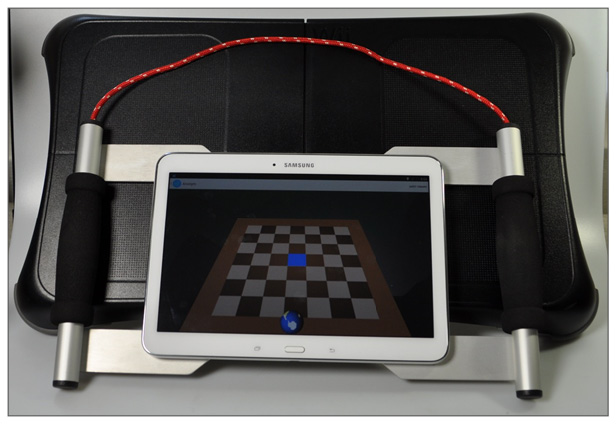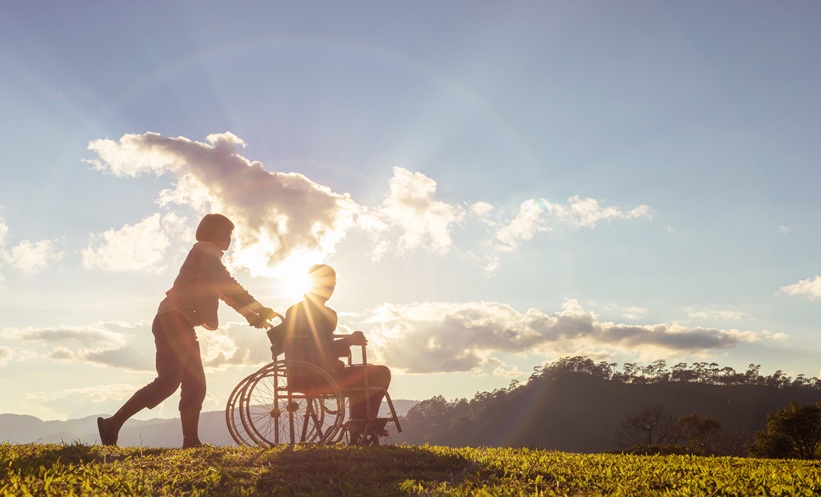BACKGROUND
Impaired balance is common in people with multiple sclerosis (MS) and can be present even in persons with a mild disability level.1 With increasing disability level, gait and balance impairment increases, leading to an increased risk of falls. In recent studies, interactive commercial video games, such as Wii Fit (Nintendo, Kyoto, Japan) and Xbox Kinect (Microsoft, Redmond, Washington, USA), were used for improving balance, but these studies were limited due to a lack of individual training parameters.2-9 Therefore, a small portable system that includes a stabilometric platform with visual biofeedback (Homebalance) that enables individual settings for exercise parameters was developed. The aim of this study was to evaluate the feasibility of balance exercise in the home setting using the Homebalance system in a group of people with MS and subjective perceived balance impairment.
METHODS
A total of 10 participants with relapsing-remitting MS were enrolled in the study (9 women, 1 man) with an expanded disability status scale of 1.5–6.5. The mean age was 38.4 years (standard deviation [SD]: 6.7) and the mean disease duration was 14.4 years (SD: 6.8). A number of assessments were performed at baseline and after 4 weeks of the training: timed 25-foot walk test (T25-FW), Timed Up and Go test (TUG), Berg balance scale, and a short version of the Balance Evaluation Systems Test (miniBEST test).
The intervention consisted of home-based balance training performed daily for 15–20 minutes for 4 weeks using the Homebalance system in a standing position. The first exercise session was supervised by a physiotherapist who set individual exercise parameters. The therapy included active repetitive game-like training. When standing on the stabilometric platform, the patient was instructed to move the avatar by shifting their centre of gravity. There were two therapeutic games available: Chessboard, where the therapeutic task can be set to different positions and directions, and Planets, where the therapeutic task increases the user’s stability in combination with providing cognitive training.
RESULTS
Statistically significant improvements within the home exercise group were present for the TUG test only. An improvement was made from a mean of 16.8 seconds (SD: 15.2) at baseline to 15.1 seconds (SD: 10.2) after intervention (p=0.01). All other gait parameters, balance assessment, and patient reported outcomes did not achieve a statistically significant improvement. T25-FT went from a mean of 13.2 seconds (SD: 13.2) to a mean of 12.5 seconds (SD: 11.6), the Berg Balance test improved from a mean of 45.5 (SD: 10.3) to a mean of 47.5 (SD: 9.3) points, and the miniBEST test from a mean of 20.3 (SD: 7.2) to a mean of 21.1 (SD: 6.8) points. No adverse events were reported during the exercise period.
Several studies have shown possible benefits of this type of training using the Wii, either supervised by a physiotherapist2-6 or at home.7-9 However, commercial exergaming devices do not allow adjustments to individual difficulty settings that in some cases are necessary to meet the physical abilities of the individual and, therefore, the treatment goals. In contrast, in the Homebalance system, training difficulties and parameters of both therapeutic games could be set individually. Findings from our pilot study showed that this system is safe and feasible for use in balance rehabilitation for people with MS with mild-to-severe disability.
These results could be limited due to the small sample size in this pilot study. We are now evaluating the effect of this type of home balance exercise in a larger cohort of patients with MS.
CONCLUSION
Data from our pilot study indicated that balance training using Homebalance with audio-visual biofeedback is feasible and may be an effective method for balance training in people with MS with mild-to-severe disability.

Figure 1: The components of the Homebalance system including the chess-based balance game and the stabilometric platform.








